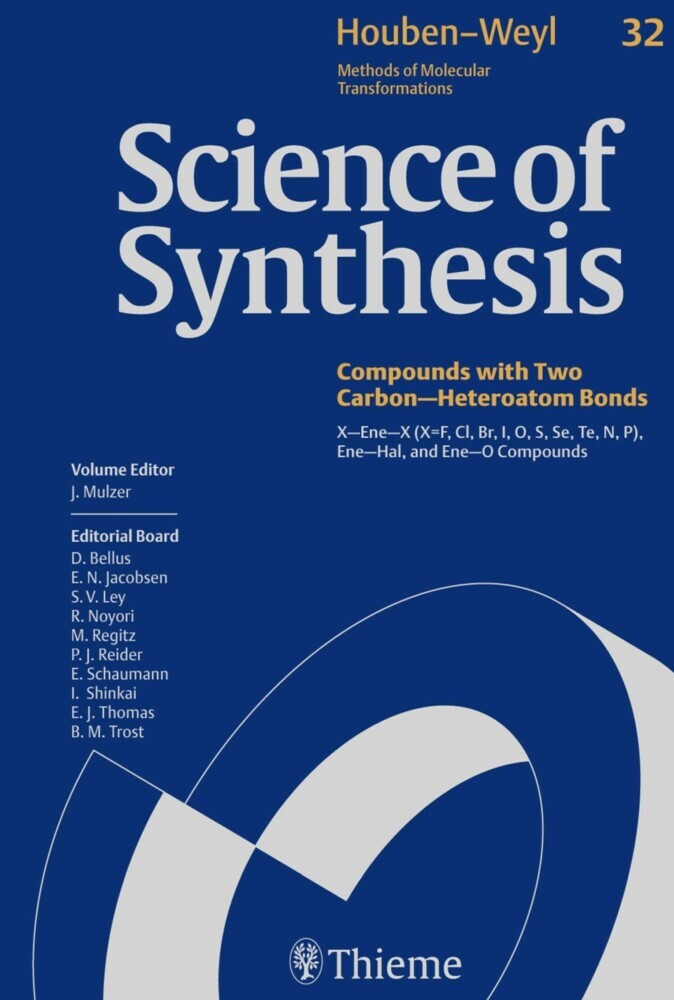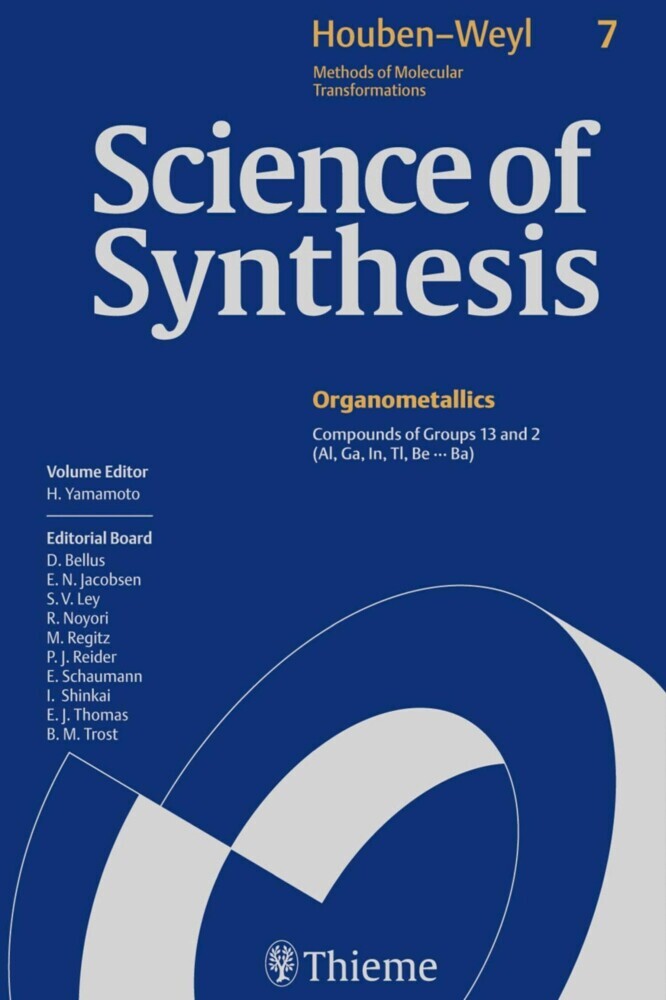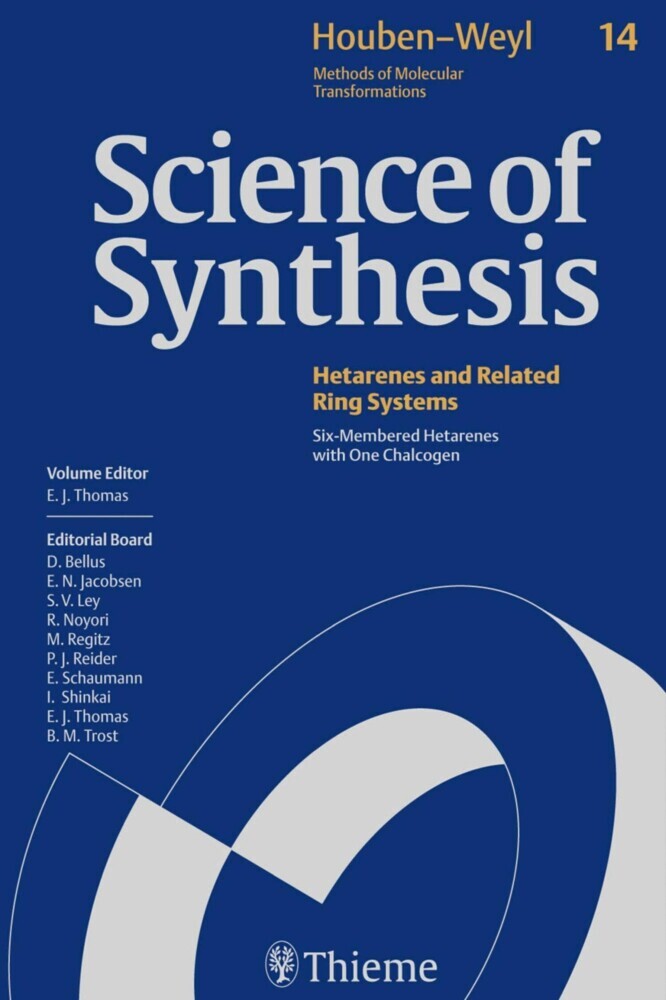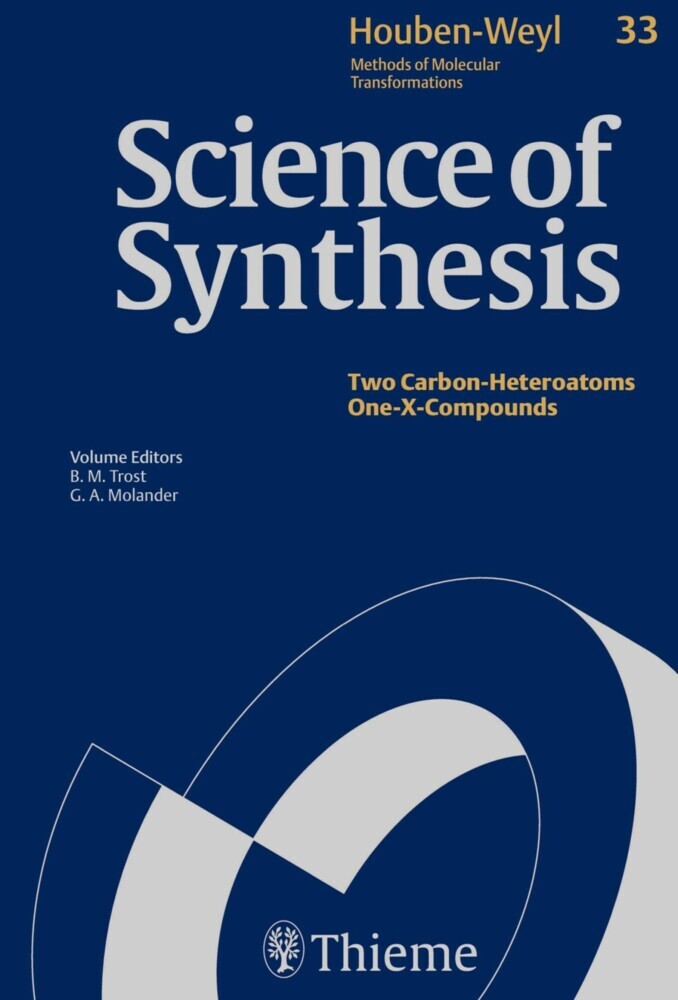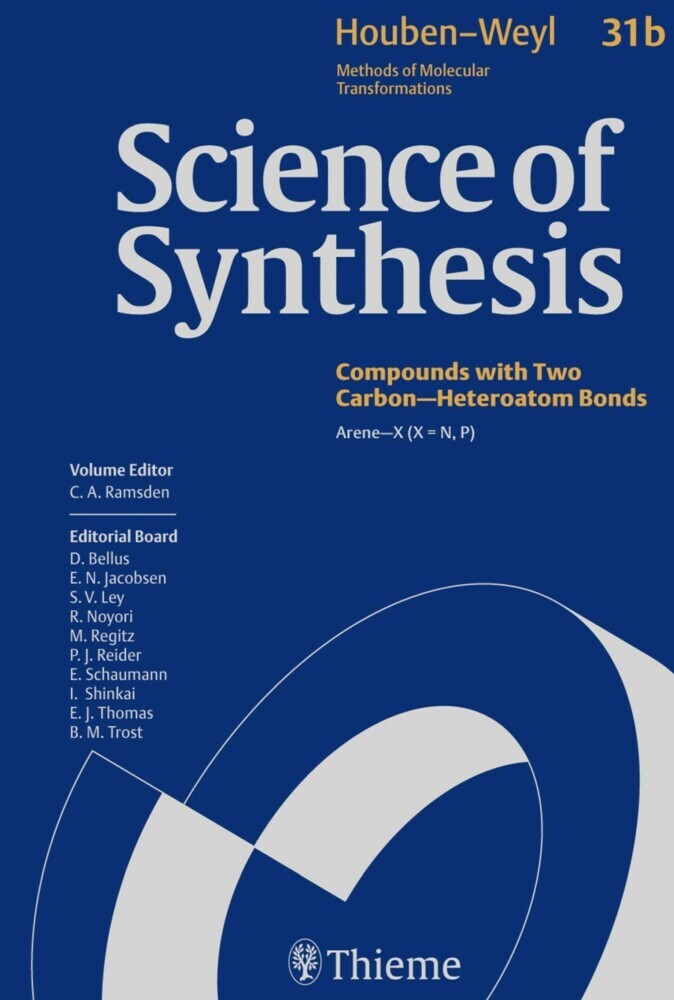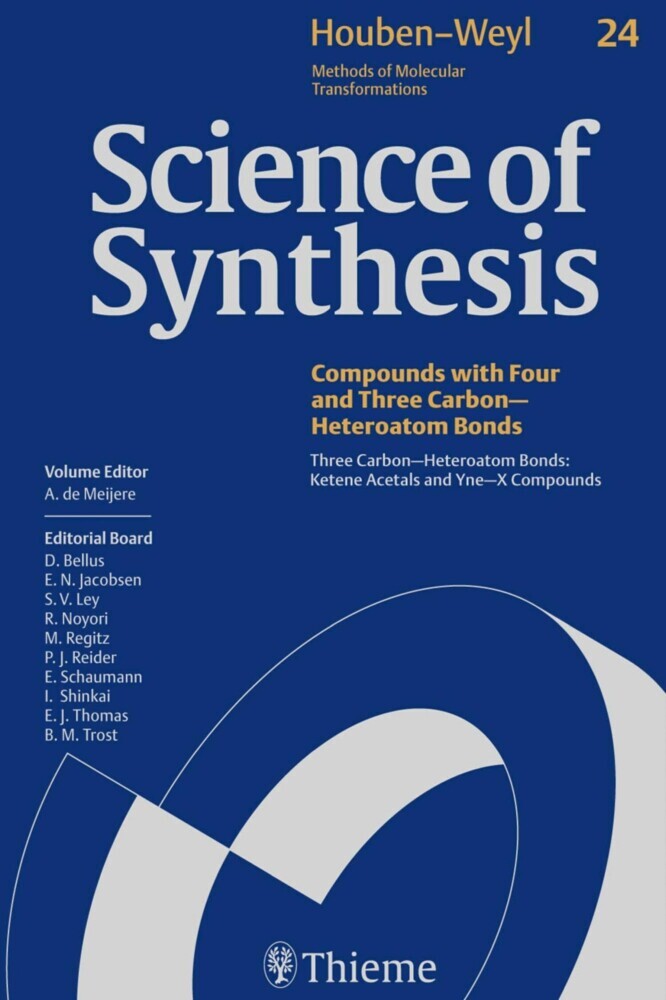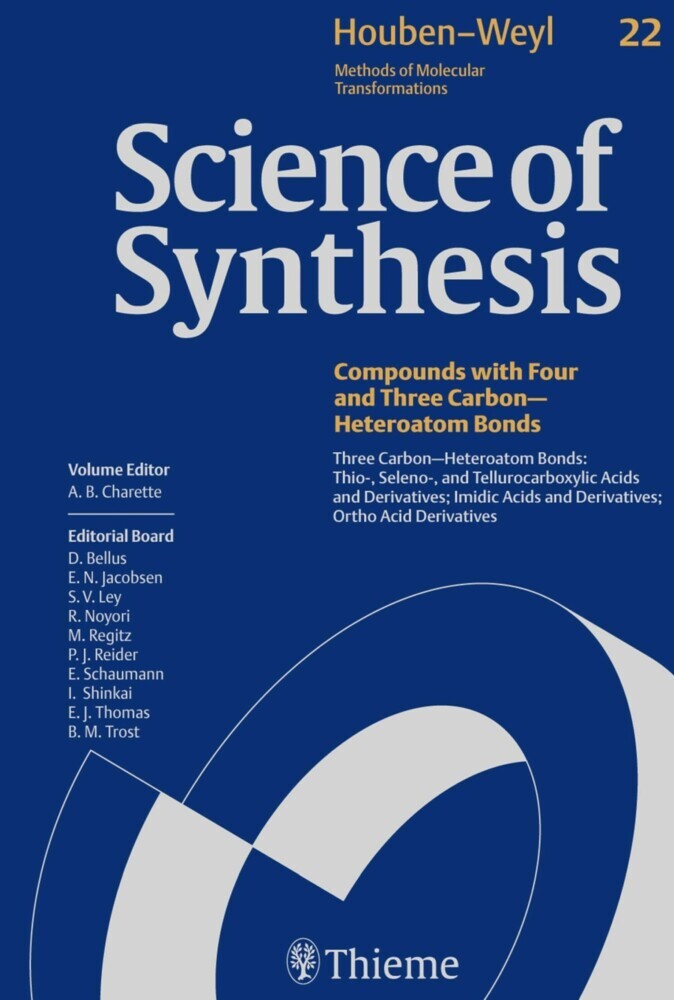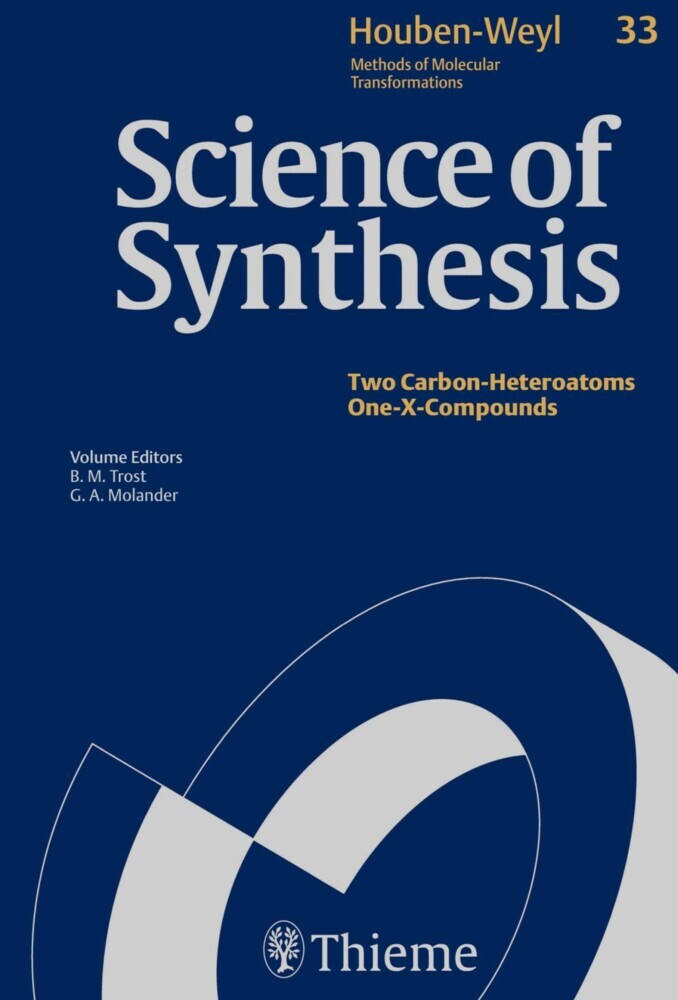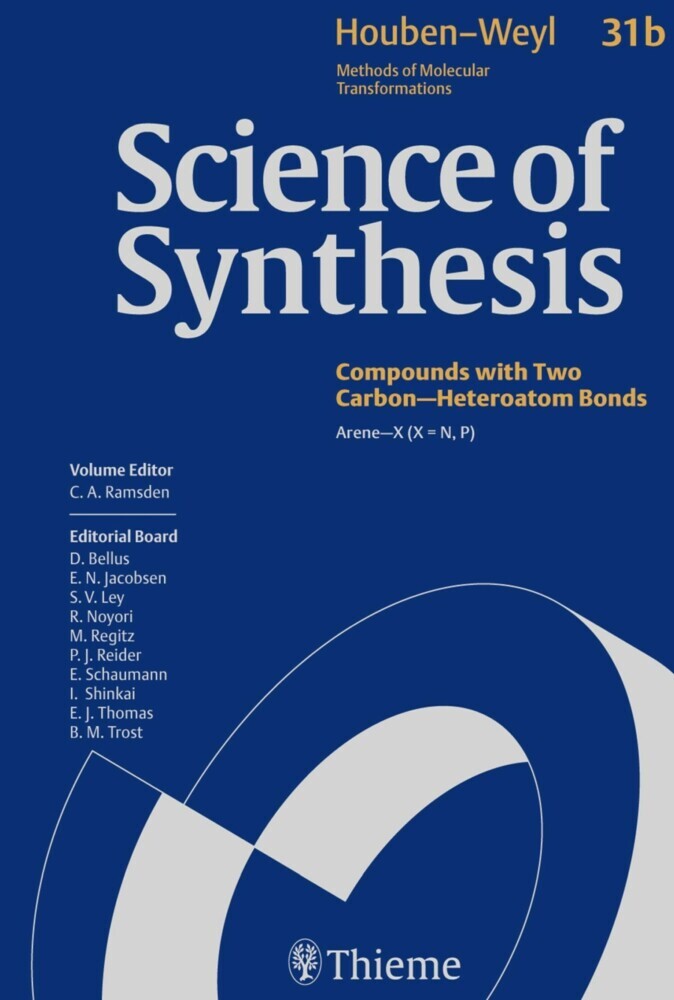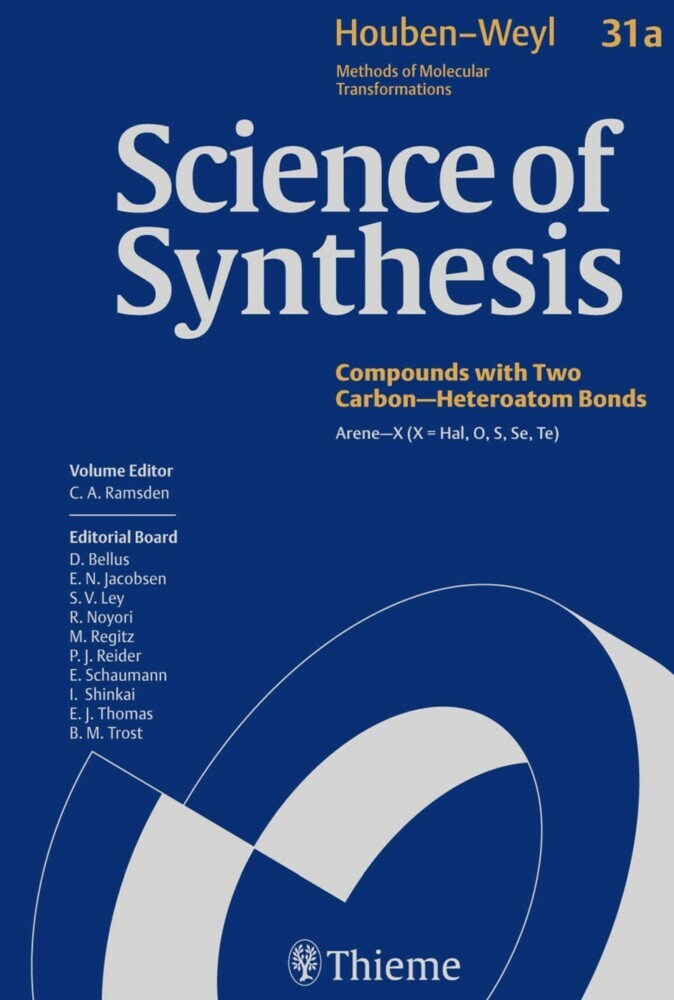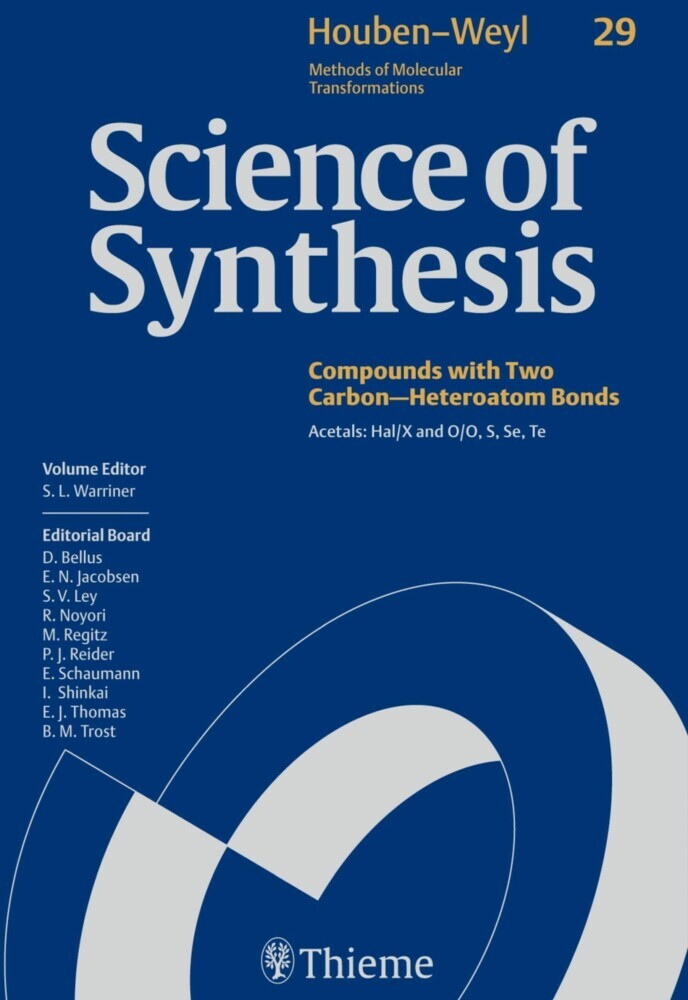Science of Synthesis: Houben-Weyl Methods of Molecular Transformations Vol. 32
X-Ene-X (X=F, Cl, Br, I, O, S, Se, Te, N, P), Ene-Hal, and Ene-O Compounds
Science of Synthesis: Houben-Weyl Methods of Molecular Transformations Vol. 32
X-Ene-X (X=F, Cl, Br, I, O, S, Se, Te, N, P), Ene-Hal, and Ene-O Compounds
Science of Synthesis: Houben-Weyl Methods of Molecular Transformations is the entirely new edition of the acclaimed reference series Houben-Weyl, the standard synthetic chemistry resource since 1909. This new edition is published in English and will comprise 48 volumes published between the years 2000 and 2008.
Science of Synthesis is a quality reference work developed by a highly esteemed editorial board to provide a comprehensive and critical selection of reliable organic and organometallic synthetic methods. This unique resource is designed to be the first point of reference when searching for a synthesis strategy.
- Contains the expertise of presently 400 leading chemists worldwide
- Critically evaluates the preparative applicability and significance of the synthetic methods
- Discusses relevant background information and provides detailed experimental procedures
For full information on the Science of Synthesis series, visit the Science of Synthesis Homepage.
1;Science of Synthesis - Volume 32: X--Ene--X (X = F, Cl, Br, I, O, S, Se, Te, N, P), Ene--Hal, and Ene--O Compounds;1 1.1;Title page;3 1.2;Imprint;5 1.3;Preface;6 1.4;Volume Editor's Preface;8 1.5;Overview;10 1.6;Table of Contents;14 1.7;Introduction;36 1.8;32.1 Product Class 1: 1,3-Bis(heteroatom-substituted) Allenes and Analogous Higher Cumulenes;48 1.8.1;32.1.1 Product Subclass 1: 1,3-Dihaloallenes;48 1.8.1.1;32.1.1.1 Synthesis of Product Subclass 1;48 1.8.1.1.1;32.1.1.1.1 Method 1: Synthesis Using Alkyllithium Reagents and Pyran-2-ones;48 1.8.2;32.1.2 Product Subclass 2: 1-Halo-3-(organooxy)allenes;50 1.8.3;32.1.3 Product Subclass 3: 1-Halo-3-(organochalcogeno)allenes;50 1.8.3.1;32.1.3.1 Synthesis of Product Subclass 3;50 1.8.3.1.1;32.1.3.1.1 Method 1: Synthesis Using Sulfonoselenoate Reagents and Alkynes;50 1.8.4;32.1.4 Product Subclass 4: 1-Nitrogen-Functionalized 3-Haloallenes;51 1.8.5;32.1.5 Product Subclass 5: 1-Phosphorus-Functionalized 3-Haloallenes;52 1.8.6;32.1.6 Product Subclass 6: 1,3-Bis(organooxy)allenes;52 1.8.7;32.1.7 Product Subclass 7: 1-(Organochalcogeno)-3-(organooxy)allenes;52 1.8.7.1;32.1.7.1 Synthesis of Product Subclass 7;52 1.8.7.1.1;32.1.7.1.1 Method 1: Synthesis Using Silyl Ketene Reagents and Alkynes;52 1.8.8;32.1.8 Product Subclass 8: 1-Nitrogen-Functionalized 3-(Organooxy)allenes;53 1.8.9;32.1.9 Product Subclass 9: 1-Phosphorus-Functionalized 3-(Organooxy)allenes;53 1.8.10;32.1.10 Product Subclass 10: 1,3-Bis(organochalcogeno)allenes;53 1.8.11;32.1.11 Product Subclass 11: 1-Nitrogen-Functionalized 3-(Organochalcogeno)allenes;54 1.8.12;32.1.12 Product Subclass 12: 1-Phosphorus-Functionalized 3-(Organochalcogeno)allenes;54 1.8.13;32.1.13 Product Subclass 13: 1,3-Bis(nitrogen-functionalized) Allenes;54 1.8.14;32.1.14 Product Subclass 14: 1-Nitrogen-Functionalized 3-Phosphorus-Functionalized Allenes;54 1.8.15;32.1.15 Product Subclass 15: 1,3-Bis(phosphorus-functionalized) Allenes;54 1.8.16;32.1.16 Product Subclass 16: 1.-Bis(heteroatom-functionalized) Cumulenes;55 1.9;32.2 Product Class 2: Monofunctionalized Allenes and Higher Cumulenes;58 1.9.1;32.2.1 Product Subclass 1: Haloallenes;58 1.9.1.1;32.2.1.1 Synthesis of Product Subclass 1;59 1.9.1.1.1;32.2.1.1.1 Method 1: Fluoroallenes by Fluoride Substitution with Organocuprates;59 1.9.1.1.2;32.2.1.1.2 Method 2: Chloroallenes by Isomerization of Propargylic Chlorides;60 1.9.1.1.2.1;32.2.1.1.2.1 Variation 1: Using a Copper(I)/Copper(0) Catalyst;60 1.9.1.1.2.2;32.2.1.1.2.2 Variation 2: Using Only a Copper(I) Catalyst;61 1.9.1.1.3;32.2.1.1.3 Method 3: Chloroallenes from Propargylic Alcohols and Thionyl Chloride;61 1.9.1.1.4;32.2.1.1.4 Method 4: Chloroallenes from Propargylic Alcohols and Hydrogen Chloride;62 1.9.1.1.5;32.2.1.1.5 Method 5: Flash-Vacuum Thermolysis of 1-Chlorocyclopropenes;62 1.9.1.1.6;32.2.1.1.6 Method 6: Chloroallenes from Benzyne and Propargyl Chloride;63 1.9.1.1.7;32.2.1.1.7 Method 7: Chloroallenes from Ketene Silyl Acetals;63 1.9.1.1.8;32.2.1.1.8 Method 8: Chloroallenes from Alkynes and Benzil;64 1.9.1.1.9;32.2.1.1.9 Method 9: Chloroallenes from Propargylic Alcohols and Titanium(IV) Chloride;65 1.9.1.1.10;32.2.1.1.10 Method 10: Bromoallenes by Alkynylogous Ring Opening of Oxiranes;66 1.9.1.1.11;32.2.1.1.11 Method 11: Bromoallenes by Copper-Mediated Nucleophilic Substitution of Propargylic Methanesulfonates;67 1.9.1.1.12;32.2.1.1.12 Method 12: Bromoallenes from Acid Chlorides;67 1.9.1.1.13;32.2.1.1.13 Method 13: Bromoallenes from Phosphonium Bromides;68 1.9.1.1.14;32.2.1.1.14 Method 14: Iodoallenes from Propargylic Alcohols;69 1.9.1.1.14.1;32.2.1.1.14.1 Variation 1: Activation of the Propargylic Alcohol by a Phosphonium Species;69 1.9.1.1.14.2;32.2.1.1.14.2 Variation 2: Using a Copper(I)/Copper(0) Catalyst;69 1.9.2;32.2.2 Product Subclass 2: (Organochalcogeno)allenes;70 1.9.2.1;32.2.2.1 Synthesis of Product Subclass 2;70 1.9.2.1.1;32.2.2.1.1 Method 1: Isomerization of Propargyl Ethers by
| ISBN | 9783131720818 |
|---|---|
| Artikelnummer | 9783131720818 |
| Medientyp | E-Book - PDF |
| Copyrightjahr | 2014 |
| Verlag | Georg Thieme Verlag KG |
| Umfang | 949 Seiten |
| Sprache | Englisch |
| Kopierschutz | Digitales Wasserzeichen |

